Estimating Underwater Light Regime under Spatially Heterogeneous Sea Ice in the Arctic
Abstract
:1. Introduction
2. Material and Methods
2.1. Study Site and Field Campaign
2.2. In Situ Underwater Light Measurements
2.3. 3D Monte Carlo Numerical Simulations of Radiative Transfer
2.3.1. Theory and Geometry
2.3.2. Estimation of Reference and Local Light Profiles
2.4. Statistical Analysis
3. Results
3.1. Comparing In Situ Downward Irradiance () and Upward Radiance () Measurements
3.2. 3D Monte Carlo Numerical Simulations
3.3. Inelastic Scattering
4. Discussion
5. Conclusions
Author Contributions
Funding
Acknowledgments
Conflicts of Interest
Appendix A

Appendix B. Smoothing Radiance Data

Appendix C. Raman Inelastic Scattering

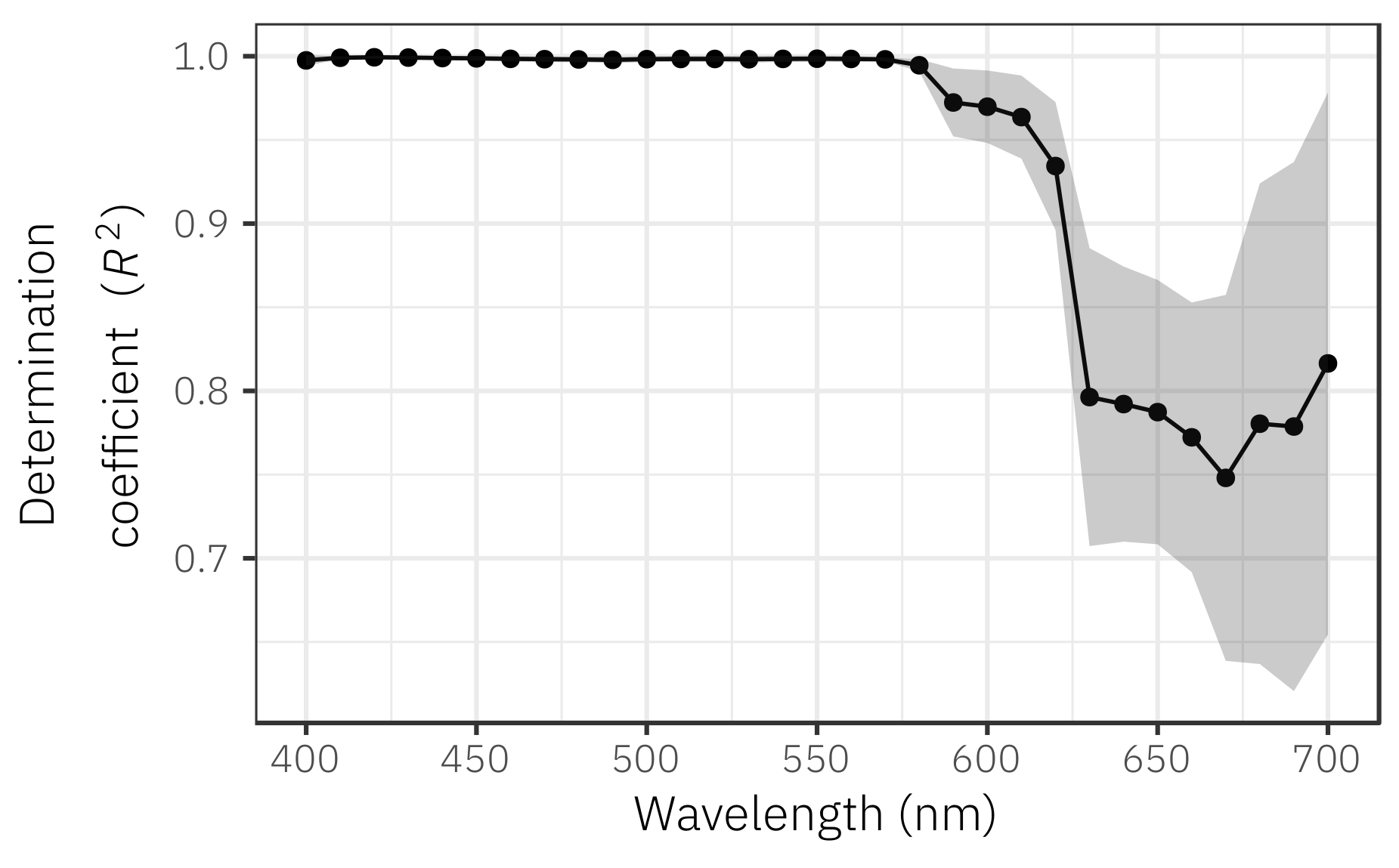
HydroLight Simulations
- A surface free of ice.
- A surface without waves.
- Sun position at noon for May 1st (solar zenith angle = 45.39 degrees).
- A cloudless sky.
- No fluorescence.
- Using HydroLight default atmospheric parameters.
- The scattering phase function of water was described by a Fournier-Forand analytic form with a 3% backscatter fraction.
- EcoLight option was run.

References
- Kirk, J.T.O. Light and Photosynthesis in Aquatic Ecosystems, 2nd ed.; Cambridge University Press: Cambridge, UK; New York, NY, USA, 1994. [Google Scholar]
- Morel, A. An ocean flux study in eutrophic, mesotrophic and oligotrophic situations: The EUMELI program. Deep Sea Res. Part I Oceanogr. Res. Pap. 1996, 43, 1185–1190. [Google Scholar] [CrossRef]
- Nicolaus, M.; Katlein, C. Mapping radiation transfer through sea ice using a remotely operated vehicle (ROV). Cryosphere 2013, 7, 763–777. [Google Scholar] [CrossRef] [Green Version]
- Katlein, C.; Arndt, S.; Nicolaus, M.; Perovich, D.K.; Jakuba, M.V.; Suman, S.; Elliott, S.; Whitcomb, L.L.; McFarland, C.J.; Gerdes, R.; et al. Influence of ice thickness and surface properties on light transmission through Arctic sea ice. J. Geophys. Res. Ocean. 2015, 120, 5932–5944. [Google Scholar] [CrossRef] [PubMed] [Green Version]
- Katlein, C.; Perovich, D.K.; Nicolaus, M. Geometric Effects of an Inhomogeneous Sea Ice Cover on the under Ice Light Field. Front. Earth Sci. 2016, 4. [Google Scholar] [CrossRef]
- Lange, B.A.; Flores, H.; Michel, C.; Beckers, J.F.; Bublitz, A.; Casey, J.A.; Castellani, G.; Hatam, I.; Reppchen, A.; Rudolph, S.A.; et al. Pan-Arctic sea ice-algal chl a biomass and suitable habitat are largely underestimated for multiyear ice. Glob. Chang. Biol. 2017, 23, 4581–4597. [Google Scholar] [CrossRef] [PubMed] [Green Version]
- Mundy, C.J.; Gosselin, M.; Ehn, J.; Gratton, Y.; Rossnagel, A.; Barber, D.G.; Martin, J.; Tremblay, J.É.; Palmer, M.; Arrigo, K.R.; et al. Contribution of under-ice primary production to an ice-edge upwelling phytoplankton bloom in the Canadian Beaufort Sea. Geophys. Res. Lett. 2009, 36, L17601. [Google Scholar] [CrossRef]
- Frey, K.E.; Perovich, D.K.; Light, B. The spatial distribution of solar radiation under a melting Arctic sea ice cover. Geophys. Res. Lett. 2011, 38. [Google Scholar] [CrossRef] [Green Version]
- Laney, S.R.; Krishfield, R.A.; Toole, J.M. The euphotic zone under Arctic Ocean sea ice: Vertical extents and seasonal trends. Limnol. Oceanogr. 2017, 62, 1910–1934. [Google Scholar] [CrossRef] [Green Version]
- Zaneveld, J.R.V.; Boss, E.; Barnard, A. Influence of surface waves on measured and modeled irradiance profiles. Appl. Opt. 2001, 40, 1442. [Google Scholar] [CrossRef] [PubMed]
- Smith, R.C.; Baker, K.S. Analysis of Ocean Optical Data II. In Proceedings of the 1986 Technical Symposium Southeast, Orlando, FL, USA, 7 August 1986; Volume 489, p. 95. [Google Scholar] [CrossRef]
- Mobley, C.D. Measuring Radiant Energy, Ocean Optics Web Book. Available online: http://www.oceanopticsbook.info/view/light_and_radiometry/measuring_radiant_energy (accessed on 28 November 2018).
- Petrich, C.; Nicolaus, M.; Gradinger, R. Sensitivity of the light field under sea ice to spatially inhomogeneous optical properties and incident light assessed with three-dimensional Monte Carlo radiative transfer simulations. Cold Reg. Sci. Technol. 2012. [Google Scholar] [CrossRef]
- Katlein, C.; Nicolaus, M.; Petrich, C. The anisotropic scattering coefficient of sea ice. J. Geophys. Res. Ocean. 2014, 119, 842–855. [Google Scholar] [CrossRef] [Green Version]
- Leymarie, E.; Doxaran, D.; Babin, M. Uncertainties associated to measurements of inherent optical properties in natural waters. Appl. Opt. 2010, 49, 5415. [Google Scholar] [CrossRef] [PubMed]
- Fournier, G.R.; Forand, J.L. Analytic phase function for ocean water. In Proceedings of the Ocean Optics XII, Bergen, Norway, 26 October 1994; Jaffe, J.S., Ed.; 1994; pp. 194–201. [Google Scholar] [CrossRef]
- Mobley, C.D.; Sundman, L.K.; Boss, E. Phase function effects on oceanic light fields. Appl. Opt. 2002, 41, 1035. [Google Scholar] [CrossRef] [PubMed]
- Girard, S.L.; Leymarie, E.; Marty, S.; Matthes, L.; Ehn, J.; Babin, M. High angular resolution measurements of the radiance distribution beneath Arctic landfast sea ice during the spring transition. Earth Space Sci. 2018, 5, 30–47. [Google Scholar]
- Perovich, D.K. Sea ice and sunlight. In Sea Ice; John Wiley & Sons, Ltd.: Chichester, UK, 2016; Chapter 4; pp. 110–137. [Google Scholar] [CrossRef]
- R Core Team. R: A Language and Environment for Statistical Computing; R Foundation for Statistical Computing: Vienna, Austria, 2018. [Google Scholar]
- Li, L.; Stramski, D.; Reynolds, R.A. Effects of inelastic radiative processes on the determination of water-leaving spectral radiance from extrapolation of underwater near-surface measurements. Appl. Opt. 2016, 55, 7050. [Google Scholar] [CrossRef]
- Berwald, J.; Stramski, D.; Mobley, C.D.; Kiefer, D.A. Effect of Raman scattering on the average cosine and diffuse attenuation coefficient of irradiance in the ocean. Limnol. Oceanogr. 1998, 43, 564–576. [Google Scholar] [CrossRef] [Green Version]
- Landy, J.; Ehn, J.; Shields, M.; Barber, D. Surface and melt pond evolution on landfast first-year sea ice in the Canadian Arctic Archipelago. J. Geophys. Res. Ocean. 2014, 119, 3054–3075. [Google Scholar] [CrossRef] [Green Version]
- Eicken, H.; Grenfell, T.C.; Perovich, D.K.; Richter-Menge, J.A.; Frey, K. Hydraulic controls of summer Arctic pack ice albedo. J. Geophys. Res. Ocean. 2004, 109, 1–12. [Google Scholar] [CrossRef]
- Arndt, S.; Meiners, K.M.; Ricker, R.; Krumpen, T.; Katlein, C.; Nicolaus, M. Influence of snow depth and surface flooding on light transmission through Antarctic pack ice. J. Geophys. Res. Ocean. 2017, 122, 2108–2119. [Google Scholar] [CrossRef] [Green Version]
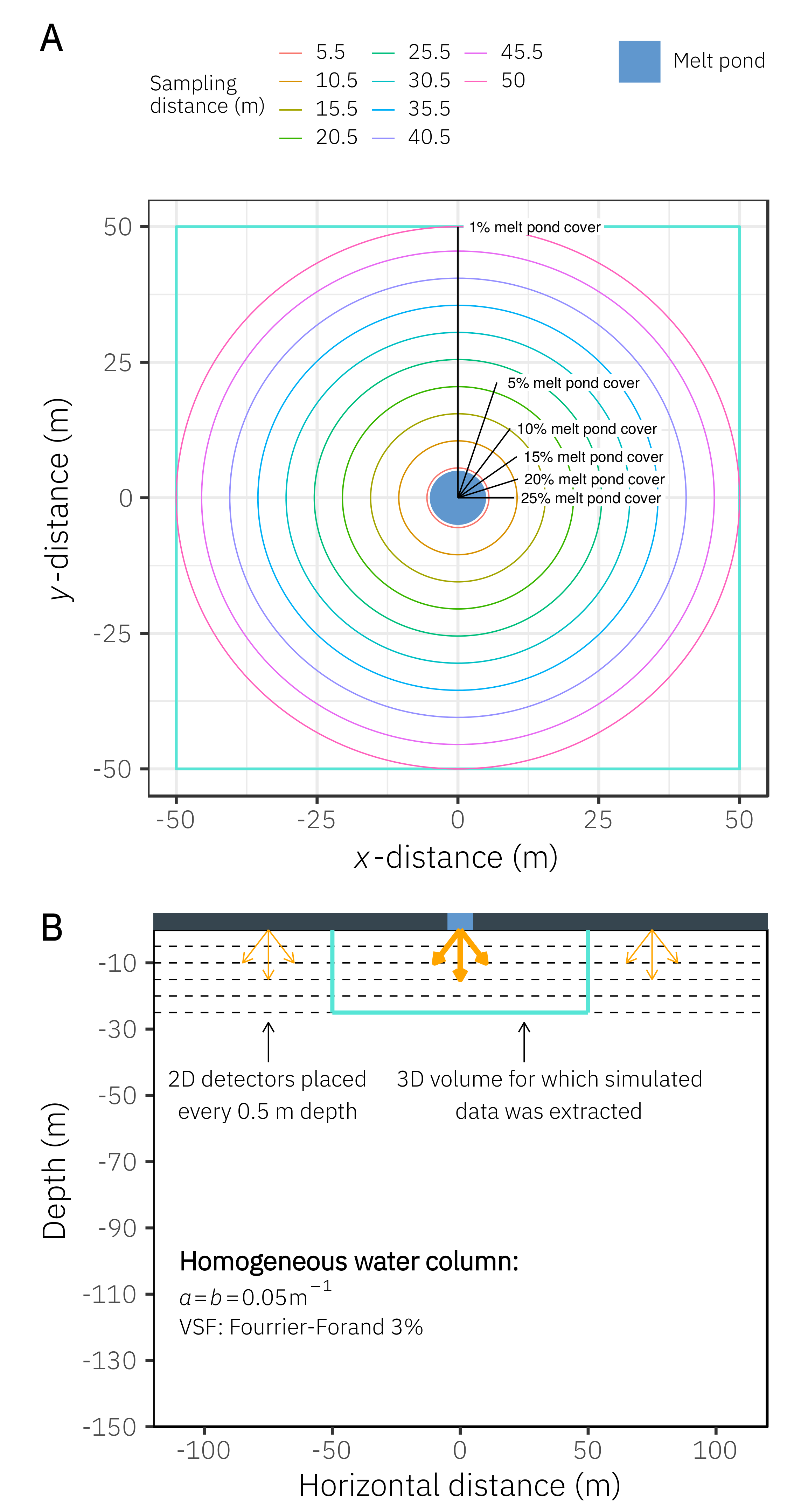

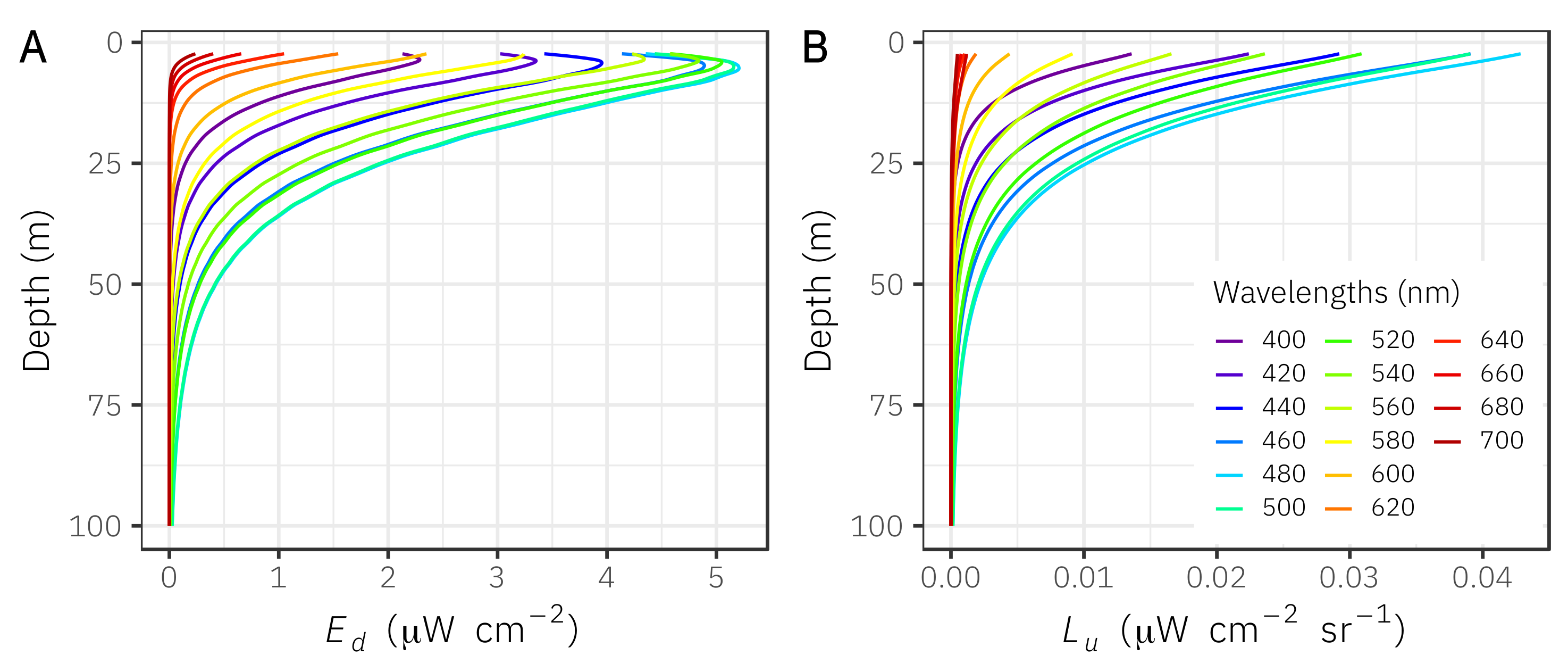



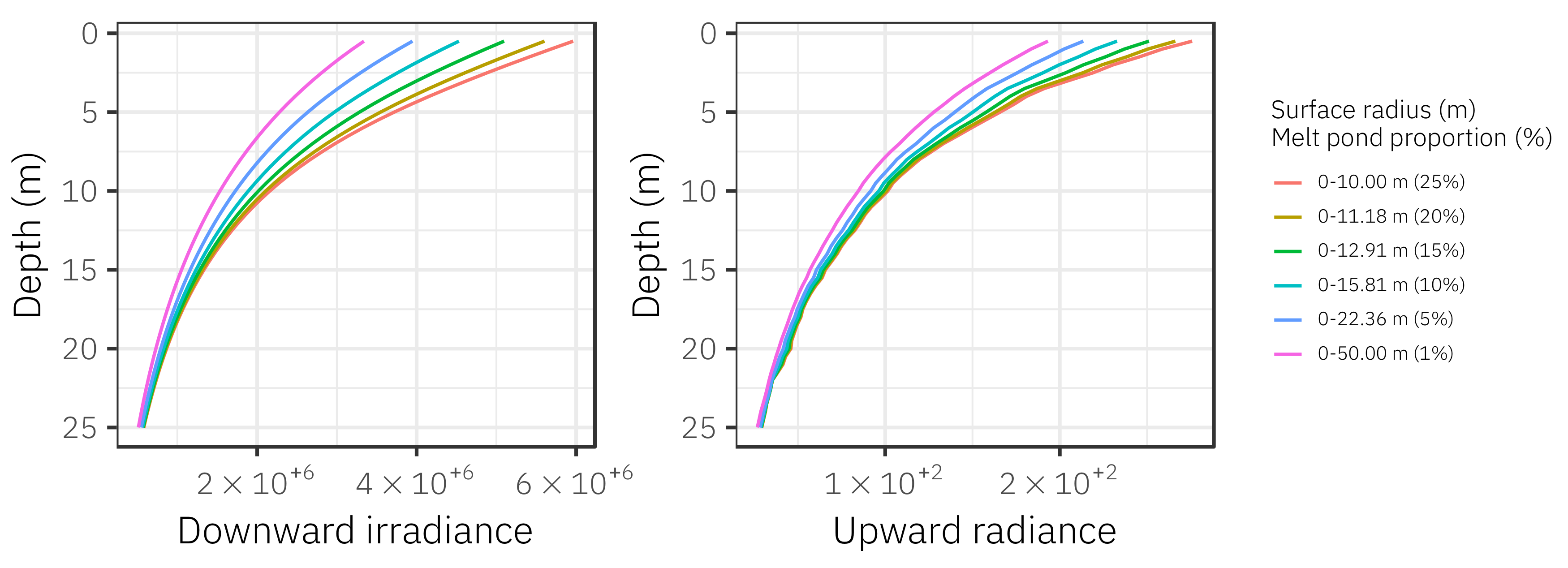
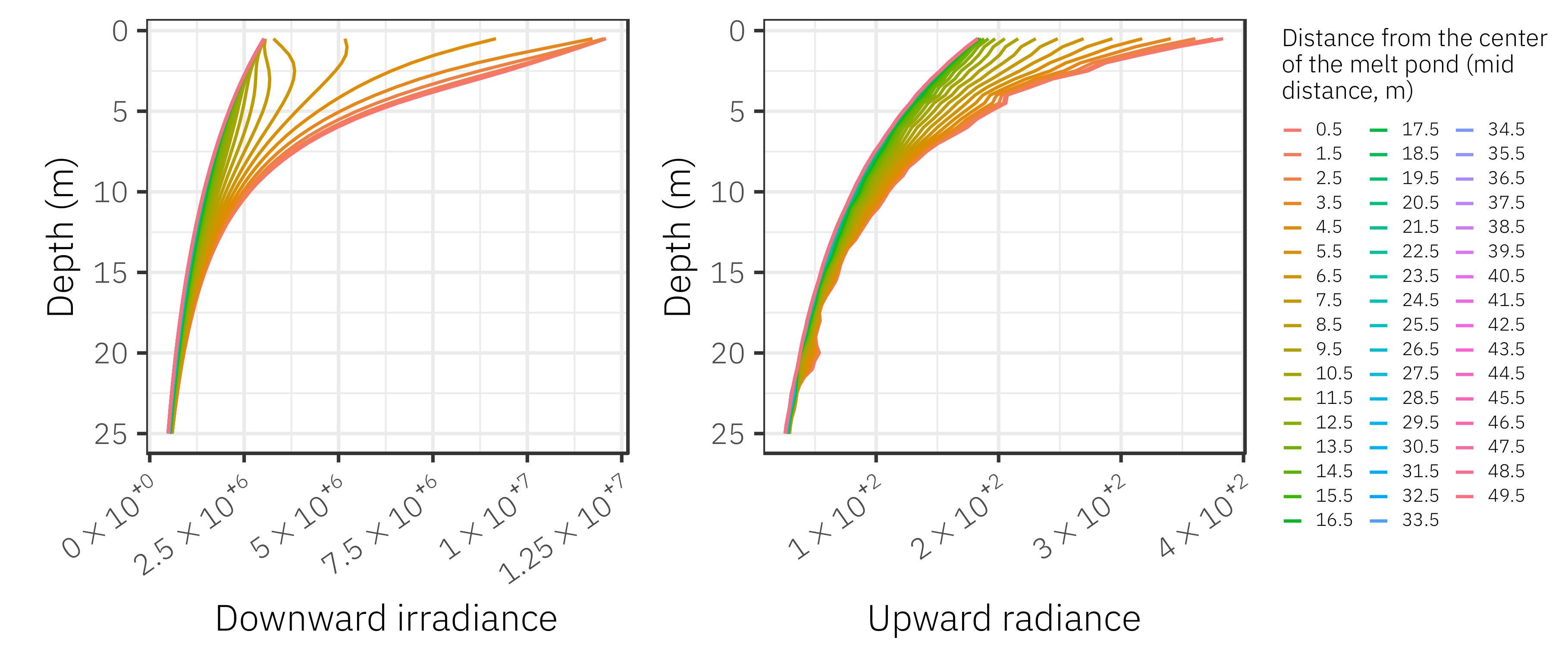

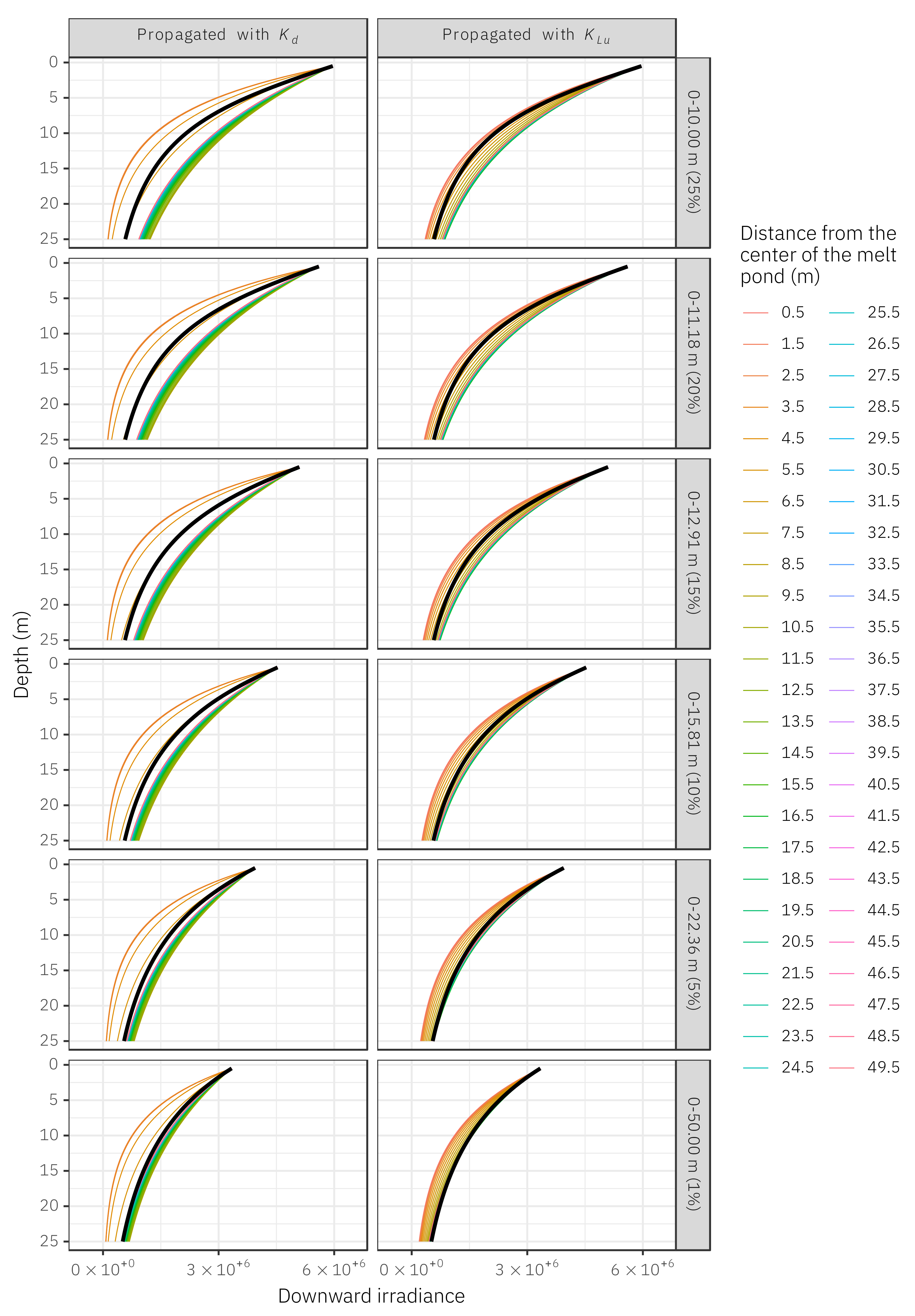
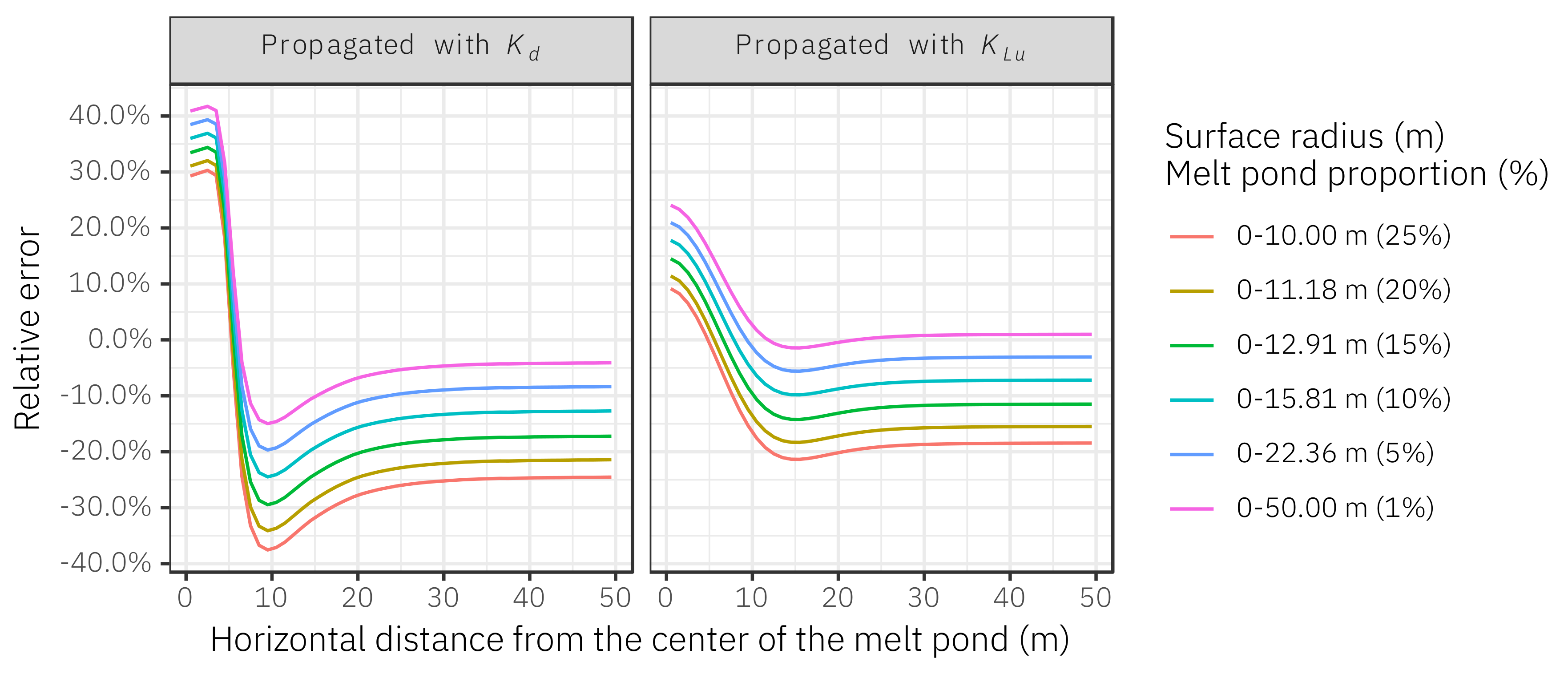
© 2018 by the authors. Licensee MDPI, Basel, Switzerland. This article is an open access article distributed under the terms and conditions of the Creative Commons Attribution (CC BY) license (http://creativecommons.org/licenses/by/4.0/).
Share and Cite
Massicotte, P.; Bécu, G.; Lambert-Girard, S.; Leymarie, E.; Babin, M. Estimating Underwater Light Regime under Spatially Heterogeneous Sea Ice in the Arctic. Appl. Sci. 2018, 8, 2693. https://doi.org/10.3390/app8122693
Massicotte P, Bécu G, Lambert-Girard S, Leymarie E, Babin M. Estimating Underwater Light Regime under Spatially Heterogeneous Sea Ice in the Arctic. Applied Sciences. 2018; 8(12):2693. https://doi.org/10.3390/app8122693
Chicago/Turabian StyleMassicotte, Philippe, Guislain Bécu, Simon Lambert-Girard, Edouard Leymarie, and Marcel Babin. 2018. "Estimating Underwater Light Regime under Spatially Heterogeneous Sea Ice in the Arctic" Applied Sciences 8, no. 12: 2693. https://doi.org/10.3390/app8122693
APA StyleMassicotte, P., Bécu, G., Lambert-Girard, S., Leymarie, E., & Babin, M. (2018). Estimating Underwater Light Regime under Spatially Heterogeneous Sea Ice in the Arctic. Applied Sciences, 8(12), 2693. https://doi.org/10.3390/app8122693




